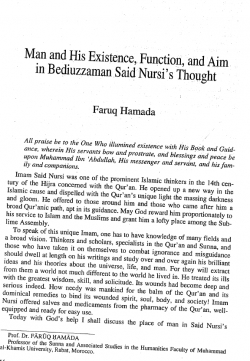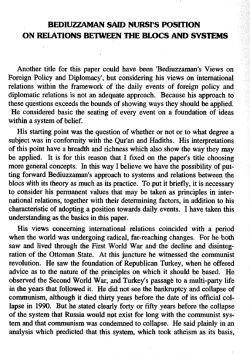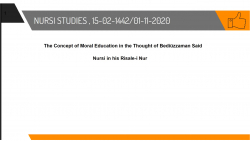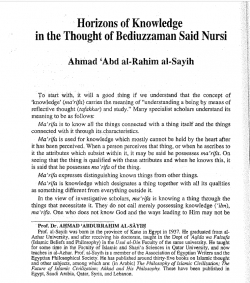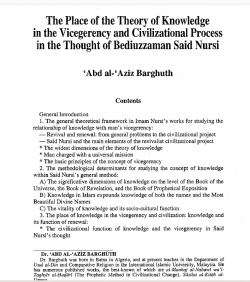Webinar Series Analogy as the Foundation of Inference in Said Nursi's Thought
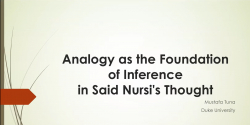
Type
Audio/Visual
Authors
Tuna ( Mustafa )
Category
Videos (Lectures &Presentations)
[ Browse Items ]
Publication Year
2020
Publisher
Nursi Society, United States
Tags
Series Name
Abstract
Bediuzzaman Said Nursi claimed that under the guidance of the Qur’an, he developed a certainty-giving epistemological method that both offered the knowledge of God and rendered existence meaningful without “sacrificing the intellect.” He referred to this method as “tamthīl” (lit. exemplification) or “qiyās tamthīlī” (analogical reasoning) and considered the Risale-i Nur to be its product. Nevertheless, the words “tamthīl” and “qiyās” can easily land us in a semantic maze. This is because, Muslim scholars specializing in various disciplines of the Islamic sciences have liberally used them to denote a range of meanings. This presentation will offer an overview of those meanings and try to locate Nursi’s epistemology in the intellectual tradition that emerges from their accumulation. One important problem that we need to solve is this: according to Nursi “there is a type of analogical reasoning that is much stronger than the certainty-giving demonstration of logic and that yields more certainty than the first mood of the first figure of logic” and that this is the analogy he uses. However, in Aristotelian logic, the first mood of the first figure of logic refers to the form of syllogism with the highest level of certainty. Thus, the question arises: what kind of an analogy is it that Nursi is referring to here that provides more certainty than the first mood of the first figure of logic?
This presentation will be based on a rough draft of the second chapter of a larger book project in which I am trying to develop a systematic analysis of Nursi’s path. This chapter examines the intellectual foundations of his thought before moving on to its spiritual/Sufi ramifications. The text I am submitting for perusal is incomplete partly because I am still working on it and partly because I moved some of what I had already written for this chapter to the first chapter for narrative coherence. Nevertheless, I am hoping that the submitted text and my presentation together will still offer a proper sense of the material and ideas that I am grappling with at the moment. I will be grateful for all comments and leads that will help me present Nursi’s position on this issue in a more complete and accurate way.
This presentation will be based on a rough draft of the second chapter of a larger book project in which I am trying to develop a systematic analysis of Nursi’s path. This chapter examines the intellectual foundations of his thought before moving on to its spiritual/Sufi ramifications. The text I am submitting for perusal is incomplete partly because I am still working on it and partly because I moved some of what I had already written for this chapter to the first chapter for narrative coherence. Nevertheless, I am hoping that the submitted text and my presentation together will still offer a proper sense of the material and ideas that I am grappling with at the moment. I will be grateful for all comments and leads that will help me present Nursi’s position on this issue in a more complete and accurate way.
Number of Copies
1
| Library | Accession No | Call No | Copy No | Edition | Location | Availability |
|---|---|---|---|---|---|---|
| Main | 579 | 1 | Yes |
